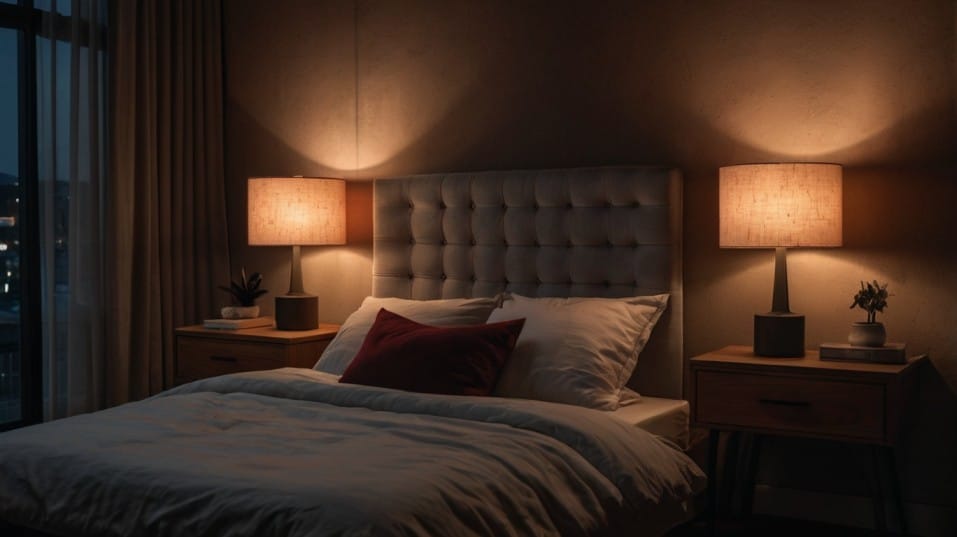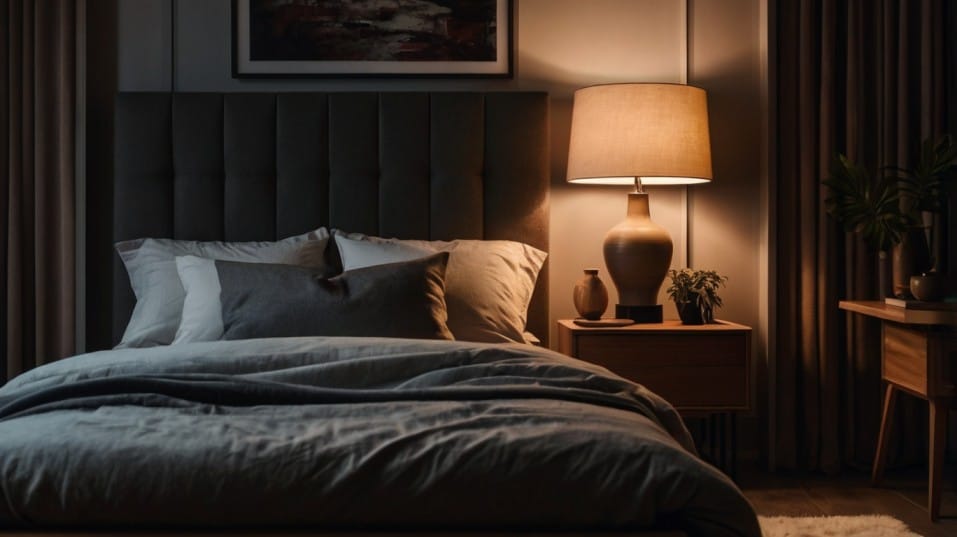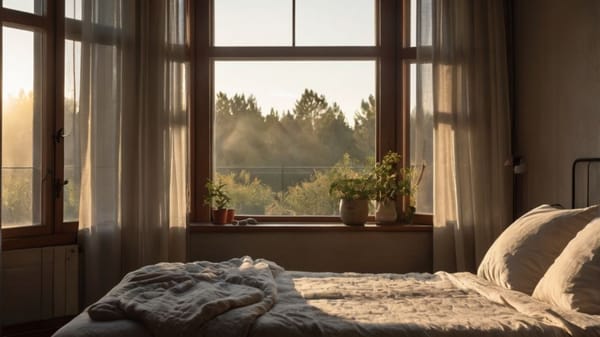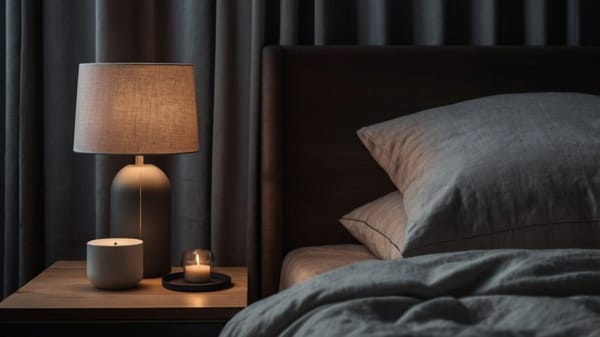Do Red Light Devices Help You Fall Asleep Faster?
Struggling to fall asleep faster? Red light devices use science-backed light cues to reset your rhythm—no effort, no pills, just better nights.

What if falling asleep faster didn’t mean cutting more things out—but adding one simple signal your brain actually understands?
Red light therapy taps into your body’s natural rhythm using low, non-stimulating light to help you wind down, reset, and sleep better. No melatonin gummies.
No rigid rules. Just the kind of light your brain evolved to recognize as bedtime. Here’s how red light devices can become your easiest nighttime win.
What Makes Red Light Different?
Most of the artificial light you’re exposed to—LEDs, overhead fluorescents, phone screens—skews toward the blue spectrum.
That blue light mimics daylight, which is great for alertness at 9 a.m., but a disaster at 10 p.m. Why? Because blue light suppresses melatonin, the hormone your body needs to start winding down.
Red light works differently. It sits at the far end of the visible spectrum (around 630 to 850 nanometers) and doesn’t interfere with melatonin production.
In fact, studies suggest it may actually enhance natural melatonin output when used correctly in the evening. That’s why sleep researchers, high-performance coaches, and recovery specialists are all starting to take red light seriously.
Unlike white or blue-tinted light, red light is non-stimulating to your central nervous system. It doesn't trick your body into staying alert.
Instead, it mimics the natural, low-angle light of a sunset—the kind of light your body evolved to associate with winding down. That evolutionary familiarity is a big part of why it works.

How Red Light Impacts Your Sleep Cycle
Here’s where it gets interesting: red light doesn’t just help you fall asleep—it supports your entire circadian rhythm.
Your circadian rhythm is your body’s internal clock. It runs on light cues. Morning sunlight triggers cortisol to wake you up. Evening darkness triggers melatonin to ease you into sleep.
When your environment sends the wrong signals—like too much screen time or harsh lighting at night—your clock gets confused. You stay wired when you should be winding down.
Red light helps reset that rhythm. It reinforces the environmental signal your brain expects in the evening: low light, low stimulation.
Over time, this builds a stronger wind-down pattern. The result? You fall asleep faster, more easily, and often stay asleep longer.
Real Evidence for Red Light’s Sleep Benefits
Research out of China in 2012 studied female athletes using red light therapy for 30 minutes each night. The result?
Improved sleep quality and increased melatonin levels. While it's a small study, it’s one of many suggesting that red light isn't just harmless at night—it’s potentially sleep-enhancing.
How to Use Red Light the Right Way
No need to get complicated. You don’t need lab-grade gear or a wellness guru's budget to get started.
Set the Scene
About 30 to 60 minutes before bed, dim all the other lights in your home. Turn off screens if possible—or use night mode and screen filters. Then turn on your red light device.
This can be a tabletop panel, a floor lamp, or even red LED bulbs in your bedroom. Let the red light wash over your skin and eyes (you don’t need to stare directly at it). A 10–20 minute session is usually enough.
Stay Consistent
This is a nightly cue, not a one-time fix. The goal is to retrain your brain: "This light means bedtime." Use it at the same time each night, ideally during your wind-down routine—right before journaling, stretching, or whatever calms your system.
Layer It With Recovery
If you train hard, travel often, or work long hours, red light can do double duty. It’s been shown to support muscle recovery and reduce inflammation.
Adding it to your pre-bed ritual can help you not only sleep better but wake up feeling better, too.
Don’t Stress the Hardware
You don’t need to blow $500 to get results. Entry-level red light panels or red-spectrum bulbs (even the kind used in photography or plant lighting) can work as long as they hit the right wavelength range—around 630 to 850nm.
The key is low-intensity, steady exposure. You’re not sunbathing. You’re signaling.
Why This Works for Real People—Not Just Biohackers
Most sleep advice asks you to stop something: no phones, no snacks, no fun after 8 p.m. Red light is different. It gives you something you can do to support sleep, instead of piling on restrictions. That’s what makes it stick.
You don’t need to overhaul your lifestyle or dive into a wellness rabbit hole. Just plug in the light. Keep it part of your bedtime rhythm.
Let it do its job. It doesn’t demand effort—it builds momentum. Over days and weeks, your brain starts to get the message earlier, and your body follows.
And yes, it’s subtle at first. Red light isn’t like taking a sleeping pill—it won’t knock you out.
But what it will do is make your transition to sleep smoother, calmer, and more reliable. Over time, that translates to falling asleep faster without frustration or forcing it.
Final Thoughts
If you’re looking for an edge in your sleep routine, red light delivers—without complexity, without side effects, and without needing to believe in anything other than biology.
It works with your system, not against it. Use it to cue your brain, dim your nights, and give your body the nudge it needs to shut down.
Start tonight. Set the lights low, switch on a red light device, and stick with it for a week.
That simple habit could shift your whole night—and supercharge the way you wake up tomorrow. Sleep smarter, not harder. Your body already knows what to do. Red light just helps it remember.




